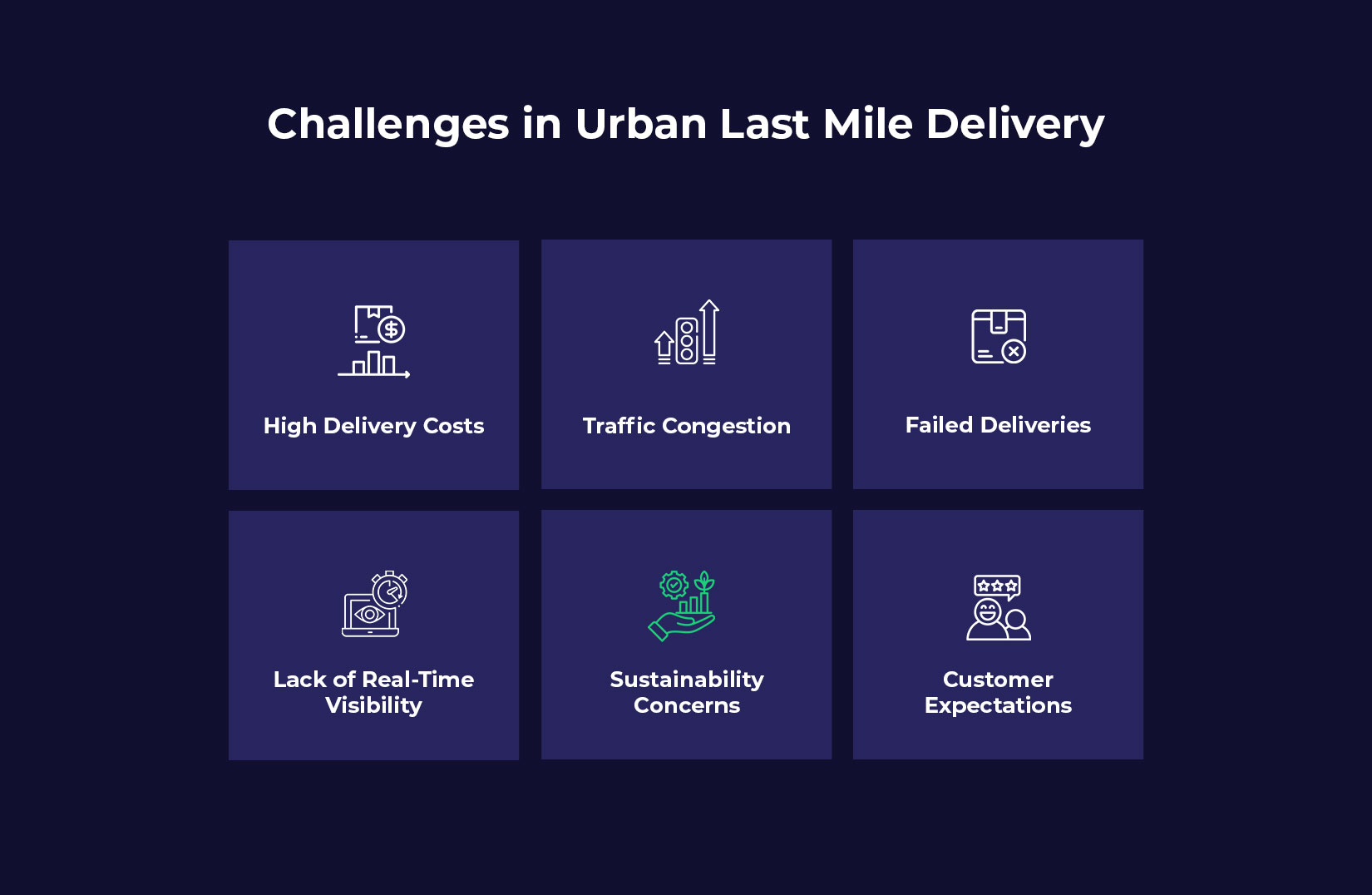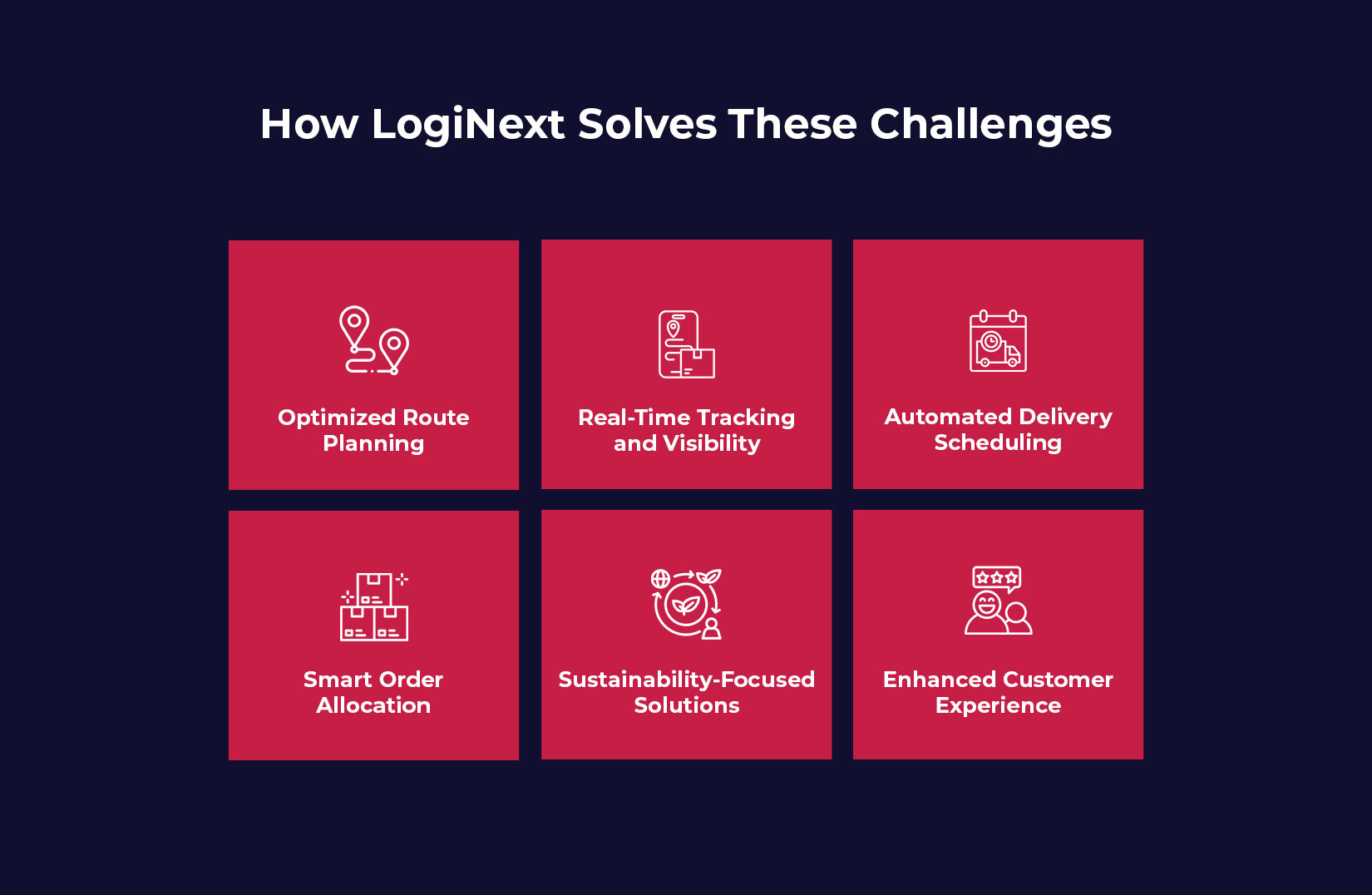
Challenges in Urban Last Mile Delivery and How LogiNext Solves Them
Urban last mile delivery has become one of the most complex logistics challenges in today’s fast-paced world. With the rapid growth of e-commerce, businesses are under constant pressure to meet the increasing customer demand. This includes providing quick and cost-effective deliveries. The rise in expectations for same-day and next-day shipping is putting tremendous strain on supply chains. This makes it difficult for companies to maintain efficiency and manage costs.
As the demand for faster deliveries continues to rise, companies must rethink their last mile delivery strategies to stay competitive. The need for innovative solutions, such as smarter routing, automation, and localized distribution centers, has never been more critical. Efficient last mile delivery is now a key differentiator for businesses aiming to meet consumer expectations while controlling operational costs.
Challenges in Urban Last Mile Delivery

1. High Delivery Costs:
Last mile delivery accounts for 53% of total shipping costs. Fuel prices, driver wages, and failed deliveries make the process expensive. Inefficient route planning increases these costs further. Companies that rely on outdated manual processes often experience cost overruns due to suboptimal route allocation and excessive fuel consumption. Additionally, failed deliveries require reattempts, adding to expenses and reducing profitability. According to a McKinsey report, last mile delivery costs can make up more than 40% of total supply chain expenses for businesses.
2. Traffic Congestion:
Urban areas are notorious for heavy traffic. Congestion leads to delayed deliveries and higher operational costs. According to studies, traffic congestion causes delivery times to increase by 30% in major cities. Peak hours, construction zones, and accidents further exacerbate delays. Courier vehicles stuck in traffic not only impact delivery timelines but also increase fuel usage and driver overtime costs. The World Economic Forum predicts that by 2030, a 36% increase in delivery vehicles on roads could lead to 21% longer delivery times.
3. Failed Deliveries:
Missed or incorrect addresses, absence of recipients, and security issues contribute to failed deliveries. Studies indicate that 5% to 10% of last mile deliveries fail, resulting in added costs and poor customer experience. Inaccurate address entries, lack of access to gated communities, and restricted delivery hours make successful deliveries more challenging. Failed deliveries lead to additional trips, increasing operational expenses and negatively impacting customer satisfaction. A study by Loqate found that failed deliveries cost retailers an estimated $1.6 billion annually.
4. Lack of Real-Time Visibility:
Without real-time tracking, businesses cannot monitor deliveries efficiently. Customers also demand real-time updates on their orders. A lack of transparency leads to uncertainty and dissatisfaction. Drivers operating without live GPS tracking may struggle to find delivery locations efficiently, leading to further delays. Businesses that lack data on delivery performance may face difficulties in optimizing future logistics operations. According to Statista, 93% of customers want full visibility into their shipments, yet only 43% of businesses provide real-time tracking.
5. Sustainability Concerns:
Customers and regulators are pushing for eco-friendly delivery solutions. However, urban logistics often rely on fuel-powered vehicles, increasing carbon emissions. The challenge is to adopt green delivery methods without raising costs. The rise in e-commerce orders has significantly increased the number of delivery vehicles on roads, contributing to pollution and traffic congestion. Companies need to invest in electric vehicles, alternative fuel sources, and optimized route planning to reduce their environmental impact. According to the Environmental Protection Agency (EPA), transportation accounts for 29% of greenhouse gas emissions in the U.S. Last-mile delivery is a significant contributor to these emissions.
6. Customer Experience:
Modern consumers expect fast, free, and flexible delivery options. Meeting these expectations while keeping costs low is a constant struggle for logistics providers. Shoppers demand same-day or next-day delivery, along with features like delivery time slot selection and easy returns. Businesses that fail to provide seamless delivery experiences risk losing customers to competitors. Additionally, last-minute order modifications and cancellations add complexity to fulfillment processes. A survey by PwC found that 88% of consumers are willing to pay for faster delivery, but only if it meets their service expectations.
How LogiNext Solves These Challenges

1. Optimized Route Planning:
LogiNext’s last mile delivery software uses AI-driven algorithms to plan the most efficient routes. This lowers operating expenses, delivery delays, and fuel usage. Businesses can save up to 20% on delivery expenses with optimized routes. Dynamic route optimization ensures that drivers take the shortest and fastest paths, avoiding traffic congestion and reducing idle time. The system also considers real-time weather conditions and roadblocks, further enhancing efficiency.
2. Real-Time Tracking and Visibility:
LogiNext provides a last mile delivery tracking software that allows businesses to monitor shipments in real-time. Customers receive live updates, improving transparency and satisfaction. Businesses can track every movement of their fleet, ensuring timely deliveries and reducing the chances of lost packages. Predictive analytics in the system alerts businesses and customers about potential delays, allowing for proactive management of delivery expectations.
3. Automated Delivery Scheduling:
With LogiNext’s last mile delivery solution, businesses can automate scheduling based on customer availability. This minimizes failed deliveries and enhances the overall customer experience. Automated scheduling reduces human errors and ensures that deliveries align with customer preferences. Intelligent scheduling algorithms also help businesses manage peak demand periods by distributing delivery loads evenly among available drivers.
4. Smart order Allocation:
The best last mile delivery software should ensure efficient resource allocation. LogiNext’s system assigns deliveries to the right drivers based on proximity and capacity, maximizing efficiency. This prevents underutilization or overloading of delivery vehicles, optimizing overall performance. The system also integrates with warehouse management solutions, enabling seamless coordination between inventory and delivery schedules. This minimizes last-minute disruptions and ensures smoother fulfillment processes.
5. Sustainability-Focused Solutions:
LogiNext’s last mile delivery platform supports electric vehicles and eco-friendly route planning. Companies can reduce their carbon footprint while maintaining efficiency. Businesses using LogiNext’s solutions can incorporate hybrid and electric vehicles into their delivery fleet, optimizing routes for reduced fuel consumption. The platform also promotes the use of bike couriers and shared delivery models, further contributing to environmental sustainability.
6. Enhanced Customer Experience:
By leveraging LogiNext’s last mile delivery system, businesses can offer flexible delivery options such as time-slot selections and contactless deliveries. This helps meet consumer demands without increasing costs. Personalized delivery options, such as same-day or scheduled deliveries, improve customer satisfaction and increase repeat purchases. Additionally, digital proof-of-delivery features ensure secure and successful drop-offs, reducing disputes and enhancing trust between businesses and customers.
Future of Urban Last Mile Delivery
The future of urban last mile delivery will be shaped by technology and sustainability. AI-powered automation will continue to improve efficiency, reducing costs and delays. Delivery drones and autonomous vehicles are expected to revolutionize last mile logistics by eliminating the need for human drivers and reducing delivery time.
Sustainability will also play a critical role. More companies will adopt electric and hybrid vehicles to reduce their carbon footprint. Smart city infrastructure, such as dedicated delivery lanes and micro-fulfillment centers, will help streamline operations and improve traffic management.
Customer expectations will drive innovations in personalized delivery options. Businesses will integrate AI-powered chatbots and predictive analytics to enhance communication and ensure proactive issue resolution. As urban populations grow and e-commerce continues to expand, companies will need to invest in the best last mile delivery software to remain competitive. The integration of AI, IoT, and green logistics will define the next phase of urban delivery solutions.
Also Read: Top Trends to Look Out for Last Mile Delivery in 2025
Conclusion
Urban last-mile delivery challenges demand innovative solutions to meet the growing demands of e-commerce. LogiNext’s advanced last-mile delivery platform tackles these complexities with AI-driven optimization, real-time tracking, and automation. This powerful combination helps businesses streamline their operations and ensure timely deliveries, even in crowded urban environments.
By integrating such a robust delivery system, companies can significantly reduce costs, improve operational efficiency, and boost customer satisfaction. Investing in the best last-mile delivery software is crucial for businesses aiming to stay competitive and meet modern customer expectations. A well-optimized system is key to achieving long-term success in the logistics sector. Click on the red button below and book a demo with LogiNext today.







@LogiNext